
Virtual education – including virtual lab simulations – holds great promise. It can bring good education to underserved communities around the world. It can substantially reduce the cost of higher education. It can bring more variety to course choices. This list goes on.
However, science, one of the most difficult courses to teach remotely, has spawned a plethora of fake labs, also known as virtual lab simulations. Science labs form the bedrock of a good science course. Without them, science courses are mostly memory exercises. Even before virtual education became popular, they were a problem. America’s Lab Report, published in 2006, castigated the high school science lab experience. It listed seven properties of good science labs. The most important of these form a trio that also describe what good science courses must do. We will return and list these later on.
As @labster's Joe Ferraro writes, "Schools are asking themselves: how do we provide a high quality #science #education that accommodates [nontraditional] students? The schools who can answer this question are going to be the winners in the next 10 years." https://t.co/APWWzeD8gG
— eLearningInside (@elearninginside) February 22, 2021
Virtual lab simulations have recently come to the forefront of science education. Simulations have a place in today’s education. They are like an artist’s conception of some topic, only animated and, possibly, interactive. They can be dazzling replacements for the pictures and diagrams that fill so many of today’s textbooks. But they can’t replace science labs.
The Growth of Virtual Lab Simulations – COVID-19 Has Exasperated the Problem.
COVID-19 shuttered our schools for in-person learning. The sudden requirement of remote learning tossed our K-12 schools into a tornado of trouble. Teachers were unprepared. Many students and teachers lacked adequate access to the internet and devices with which to perform online learning.
The lack of access to traditional science lab settings particularly vexed science teachers and school administrators. Alternatives for science lab experiences were few, often expensive, and of uncertain value. Complicating matters, many educators insisted that hands-on made the only useful lab experience. Are they right? How can remote science learning possibly compete with “the real thing”?
What Does the History of Science Teaching Tell Us?
Answering these questions requires a deep dive into the pedagogy of science instruction. The heart of the matter centers on the purpose of K-12 science classes. I shall begin at the beginning: Canon Wilson in 1867. He wrote, “The lecture may be very clear and good; and this will be an attractive and not difficult method of teaching, and will meet most of the requirements. It fails, however, in one.”
That “one,” Wilson averred, was never being “brought face to face with nature and her problems.” This problem underlies much of the resistance to virtual lab simulations, especially and famously in New York and California, where requirements for hands-on, in-person lab experiences form one of the parts of a certified high-school diploma. While other states have relaxed their hands-on lab requirements, New York and California remain steadfast, although these states have made exceptions for the pandemic.
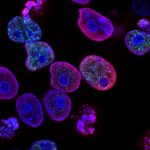
The person who literally wrote the book on science education, F. W. Westaway, had much more to say. The book was Science Education, What It Was, What It Is, What It Might Be. He also wrote a book on scientific method (Scientific Method, Its Philosophy and Practice) and on the history of science (The Endless Quest, Three Thousand Years of Science). He was the expert.
Here are three of his gems of wisdom that all science teachers should read and understand.
“Beware of the pseudo method of discovery. ‘Pour H2SO4 on granulated zinc, and you will discover that hydrogen is given off’!”
“Beware of verification methods. ‘Show that ferrous ammonium sulphate contains one-seventh of its own weight of iron.’ This is simply asking for the evidence to be cooked.”
“Teach [students] the virtue of recording all mistakes as well as successful results.”
Both Wilson and Westaway argue that science must involve an experience of genuine discovery. Prescriptive pedagogy simply can’t deliver the same learning benefits. You can find similar advice from other experts such as E. H. Hall (Harvard professor and discoverer of the Hall effect) and John Dewey.
Will Pedagogy Take a Back Seat to Exigency?
America’s Lab Report took high school science to task in 2006, calling the typical high school lab experience “poor.” It then went on to list seven objectives of science labs in schools. One of these dealt with equipment manipulation, which cannot adequately be learned strictly online. Three dealt with areas that can be learned without a laboratory experience — for example, mastery of subject matter. The remaining three can best be learned by real lab experiences. They are:
- Develop skill in scientific thinking.
- Understand the nature of science.
- Appreciate empirical data.
These three abilities will stand anyone in good stead throughout life and should not be left to scientists alone. This sort of thinking has become a necessity with our current global economy, but is not taught well in most school classes. Instead, memory replaces thought, and students are expected to swallow whole anything that their teachers throw at them.
The pandemic has had teachers struggling to provide a good learning experience that includes science labs, even without satisfying the three above criteria, all done remotely. This challenge makes life difficult for those teachers. We all see this problem in the many reports regarding schooling during the preceding 12 months. We can also see why teachers throw their hands up in frustration and settle for abandoning those criteria.
Are Virtual Simulations the Solution?
Simulations are used throughout many endeavors, including airline pilot training. This fact often becomes the excuse for using virtual lab simulations in science classes, but it misses a crucial point. Scientists use simulations to validate models by comparing them with real data and to help them select directions for their research. They do not investigate their simulations as though they are reality.
What do these classroom virtual lab simulations teach students? How well to they meet the preceding criteria? Virtual simulations come in a variety of forms. Most of them fit into the category of a virtual lab wherein students use their mouse or fingertip to move equipment around by dragging-and-dropping.
These simulations focus on procedures instead of science. They then deliver a full packet of algorithm-based data calculated from the experimental parameters selected.
This approach may well provide a great pre-lab experience so that students entering the real lab will have a good idea about what they must do. Of course, the kinesthetic aspects of doing a lab must await the real lab experience. No virtual lab can provide that.
Doing science is about investigating the real world, not computer algorithms. Real-world investigations support point #3 above. They provide an appreciation for empirical data. Simulations obviously don’t — by definition. They miss this key aspect of learning science, one that even classroom lectures and demonstrations also do not provide.
Point #2 above, understanding the nature of science, involves such things as knowing when a hypothesis is falsifiable and that no measurement is perfect. You should understand good experiment design, what fair tests are, and how to make good conclusions from your data. Virtual lab simulations can take a step in this direction, but they deliver fake science in place of the real thing. The simulations generally assume idealized conditions. They model formulas that do not match with actual measurements. Students can tell the difference between a real experiment and a simulated one. They know that simulations play at reality, that the experiments are faked, and they respond appropriately.
Scientific thinking skills (point #1 above) come from doing science. Scientists use a blend of rational thinking, critical thinking, and creative thinking in their work. Our students should be developing and exercising these skills. Real experiments, whereby students make their own measurements point-by-point, have the best likelihood of developing these skills, especially if they have not been told what to expect beforehand.
Simulations have a role to play in education, but not as substitutes for real experiments. The reasons outlined above explain this conclusion. They can show how molecules interact. They can show things that are too fast or too slow to become laboratory experiences in our K-12 schools. In short, they can greatly aid in visualizing concepts as well as helping prepare for doing real experiments.
But science teachers: consider the goals of your instruction carefully. Squeeze the most out of the few hours that you have been given to help your students learn and understand science. Focus on teaching them skills that will serve them well no matter where their careers take them. Thomas Jefferson opined that a democracy depends on a well-educated citizenry. He was also a skilled amateur scientist. Science education is just as important as English and math to meet his challenge. Teach well. The future of the world is in your hands.
Harry Keller is the president of Smart Science Education. He holds a Ph.D. in chemistry from Columbia University.
Featured Image: Ousa Chea, Unsplash.


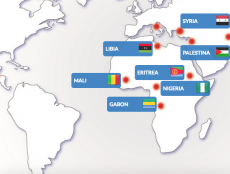
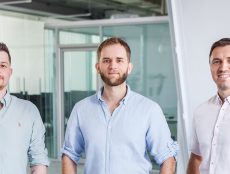
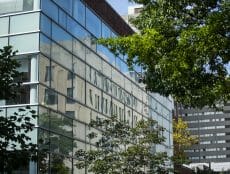
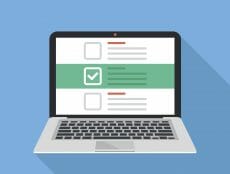

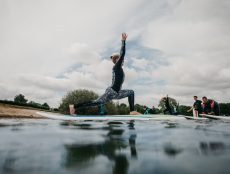

No Comments